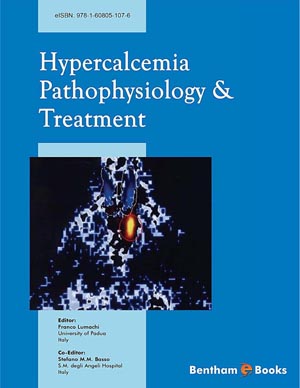Abstract
In patients with hypercalcemia the usefulness and indications of imaging studies depend on the pathological condition causing the disease. The main causes of hypercalcemia are primary hyperparathyroidism (HPT) and malignancy, but an increased serum calcium level can also be the consequence of several diseases affecting different organs, being the object of specific imaging studies. Unfortunately, they are not able to confirm or exclude all those disorders, having the purpose to examine the morphology of each organ involved in the pathogenesis of hypercalcemia, such as parathyroid glands, kidneys and urinary tract, bones and other organs. In patients with HPT the aim of imaging studies is to localize the enlarged PT glands, both in patients with single PT adenoma, and in those with multiple glands disease. The first studies should be neck ultrasonography and sestamibi scintigraphy. If they are negative or discordant, ectopic PT glands are suspected, and computed tomography (CT) scan, magnetic resonance imaging (MR) and more recently positron emission tomography (PET) should be suggested. Ultrasonography has a good accuracy in the detection of renal stones, but unenhanced CT has the best sensitivity. In patients with bone metastases the first imaging technique to be used is whole body bone scintigraphy, followed by plan x-ray of single sites, while CT and MRI may complete the differential diagnosis. CT is usually suggested for mineralized and rib lesions, MRI is preferable for bone marrow lesions, while 18F-fluoro-2-deoxyglucose (FDG)- PET is useful in the detection of soft tissue or bone metastases.





















